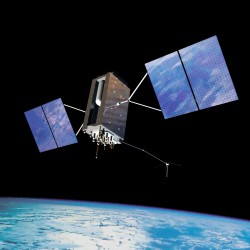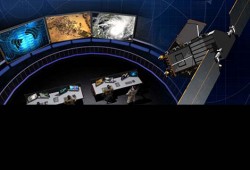
GPS III and OCX Satellite Launch, Early Orbit Ops Successfully Demonstrated
September 13, 2013
Lockheed Martin and Raytheon Company successfully completed the third of five planned launch and early orbit exercises to […]
Read More

Lockheed Martin and Raytheon Company successfully completed the third of five planned launch and early orbit exercises to […]

Raytheon Company has received Interim Authorization to Test (IATT) security certification for the Global Positioning System Next Generation […]

Raytheon Company and Lockheed Martin successfully completed the first launch readiness exercise for the U.S. Air Force’s next-generation […]

One of the long-standing issues for support of IIA vehicles after the future GPS Operational Ground Control Segment’s (OCX’s) ready-to-operate (RTO) date, which should fall in December 2016 at the latest, is what ground command-and-control (C2) system will steer GPS IIA satellites, do navigation uploads, and so on. The issue is that AEP, the current C2 system, will no longer be available once the transition to OCX takes place, and OCX has no requirement to control IIA satellites.

GPS III Endures Bad Press, IIAs an OCX Concern Reports in daily news media such as the Washington […]

The U.S. Air Force has awarded Lockheed Martin a $21.5 million contract to provide a Launch and Checkout Capability (LCC) to command and control all GPS III satellites from launch through early on-orbit testing. The LCC, which will be integrated into the Raytheon-developed Next Generation Operational Control System (OCX), will ensure launch availability for the first GPS III satellite in 2014. The LCC includes trained satellite operators and engineering solutions in partnership with OCX to support launch, early orbit operations and checkout of all GPS III satellites before the spacecraft are turned over to Air Force Space Command for operations.
Follow Us